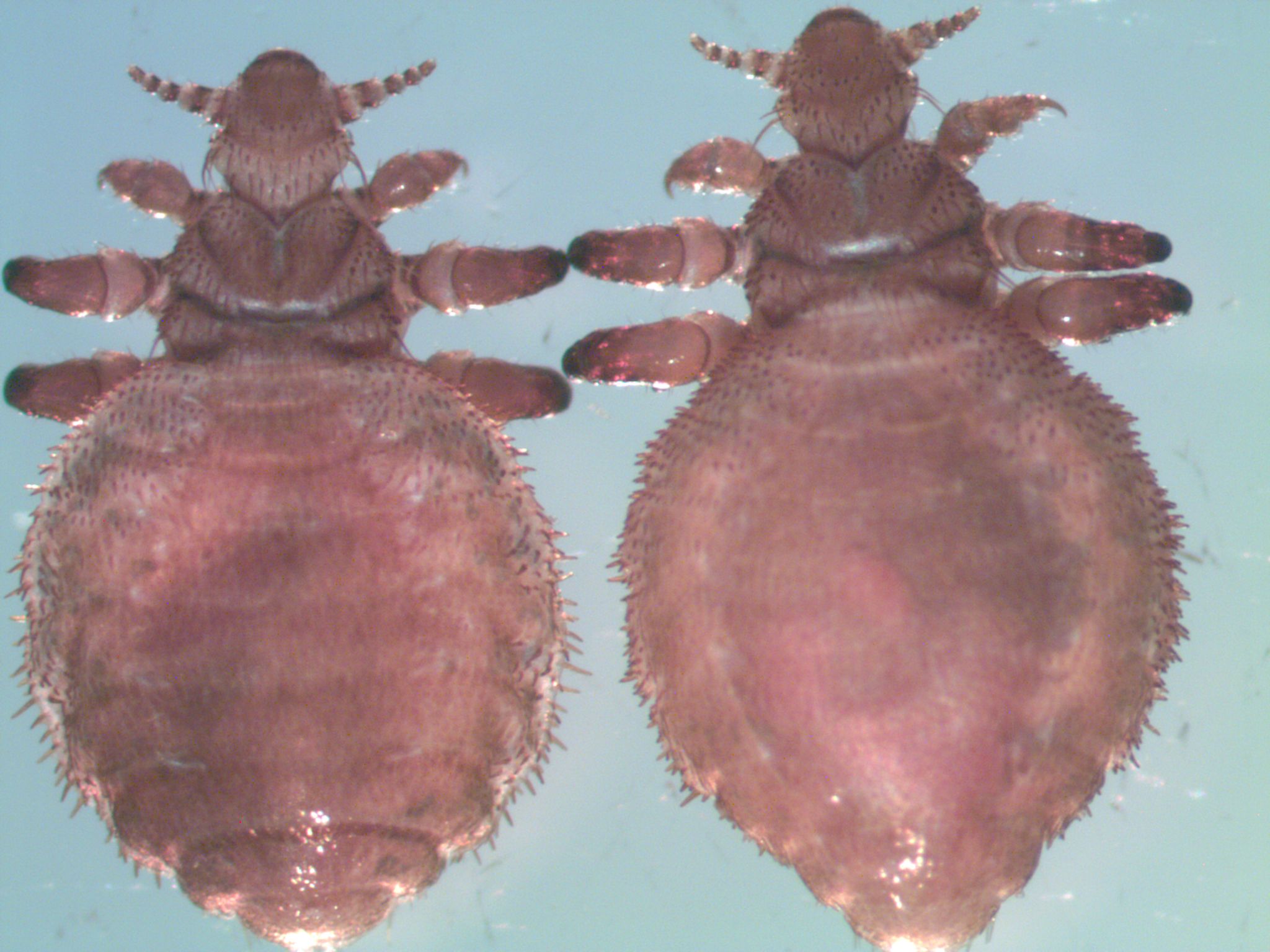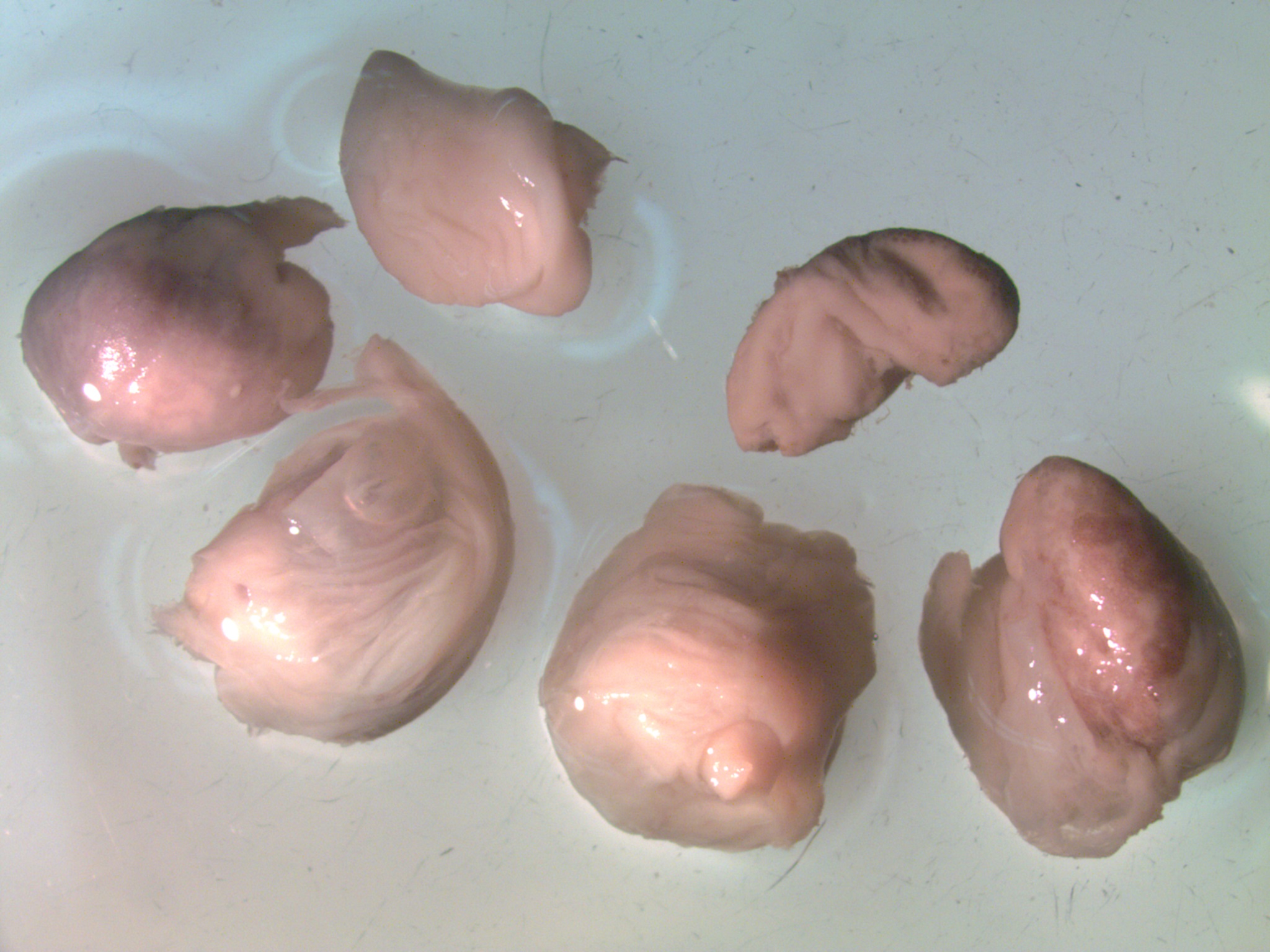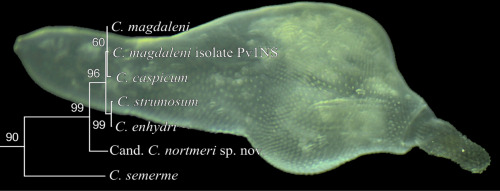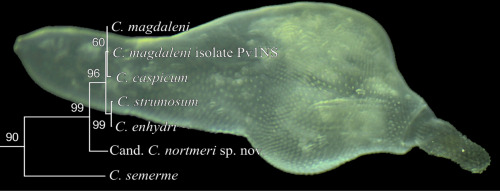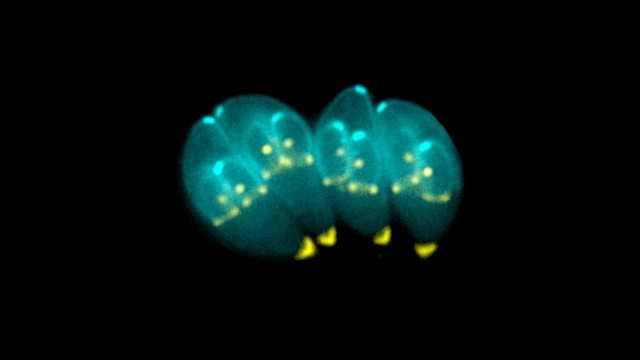Blog
Marine Mammal Parasite of the Month Answer -November 2021
This parasite is Antarctophthirus microchir and it’s found in sea lions! It’s actually been found in 5 species of sea lion in Australia, New Zealand, North America, and South America. In pups, they are found on the chest and belly primarily, possibly because other areas are too exposed to the sun. Research on adult sea […]
Marine Mammal Parasite of the Month- November 2021
This parasite is an insect from the suborder Anoplura, which consists of sucking lice. Like other insects, they have antennae, a thorax, an abdomen, and legs. Unlike other insects, they have no eyes, and their mouth contains 2 rows of 4 large hooks. Their thorax is shaped like a trapezoid and covered in long hairs […]
Marine Mammal Parasite of the Month- October 2021 Answer
This parasite is Braunina cordiformis! Remember last time how we said it was heart shaped? Well, cordiform means heart shaped, so its scientific name is actually based on its shape! This parasite is the only species in the family Brauninidae and is found in the fundic (main) and pyloric stomachs and duodenal ampullae. It’s thought […]
Marine Mammal Parasite of the Month- October 2021
This parasite is a helminth, also known as a parasitic worm, in the Trematoda class. It’s classified as a flatworm called a fluke and is found in cetaceans, primarily those in the family Dephinidae. It been found in bottlenose dolphins, dusky dolphins, Commerson’s dolphins, short beaked common dolphins, tucuxi, estuarine dolphins, Chilean dolphins, rough-toothed dolphins, […]
Marine Mammal Parasite of the Month- August 2021 Answer
This month’s parasite was the Corynosoma enhydri, a member of the thorny-headed worm community that only has one definitive host, the sea otter. The only way to determine if a sea otter is infected is through a fecal diagnosis or through a necropsy since this parasite does not present any visual signs of infection in […]
Marine Mammal Parasite of the Month- August 2021
This marine mammal parasite is a part of the acanthocephalan family but only has one species for a primary host, the sea otter. This parasite is found in sea otters of all ages, the youngest being 1 month old. Since sea otters are introduced to solid food at around 3 weeks of age by their […]
Marine Parasite of the Month July 2021-Answer
The parasite for this month was the Loxothylacus panopaei, which is often just referred to as a crab barnacle that can change the gender of a crab. The most common way to identify this parasite is by looking on the underside of the crab for what looks like an egg sac, but is really a […]
Marine Parasite of the Month- July 2021
Some parasites can do crazy things, but this month’s parasite can actually change the gender of a crab. A mud crab-specific parasite, this organism is an invasive barnacle, and commonly found in the Chesapeake Bay area as well as the Gulf of Mexico, the Caribbean, and other parts of Florida. It is speculated that they […]
Marine Mammal Parasite of the Month- Answer June 2021
The parasite for this month was Toxoplasma gondii, the toxoplasmosis disease-causing parasite. When marine mammals contract this disease, they can have many different symptoms such as anorexia, increased temperatures, swollen tonsils, and flipper lesions. In a study done by the United States Department of Agriculture, it was found that T. gondii caused mortality in sea […]
Marine Mammal Parasite of the Month- June 2021
This parasite is a protozoan that infects most warm-blooded animals, including humans, and causes the disease toxoplasmosis. As far as marine mammals go, this parasite has been observed in sea otters, manatees, harbor seals, northern fur seals, sea lions, and many cetacean species. Humans can become infected by several routes, including eating under-cooked meat of […]


